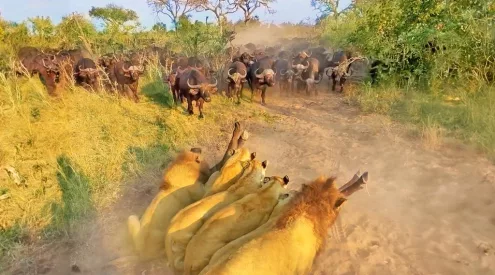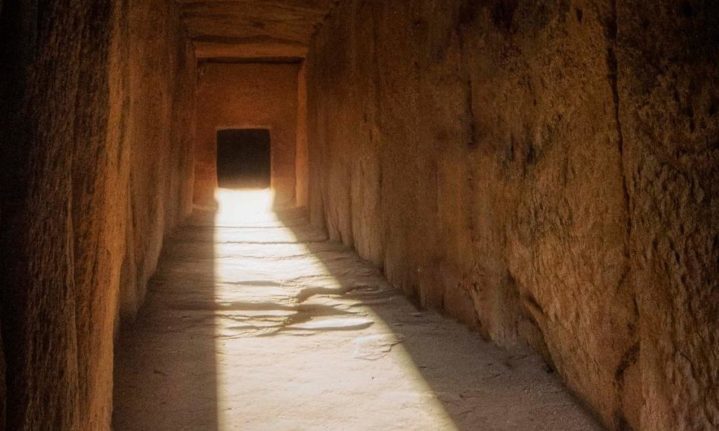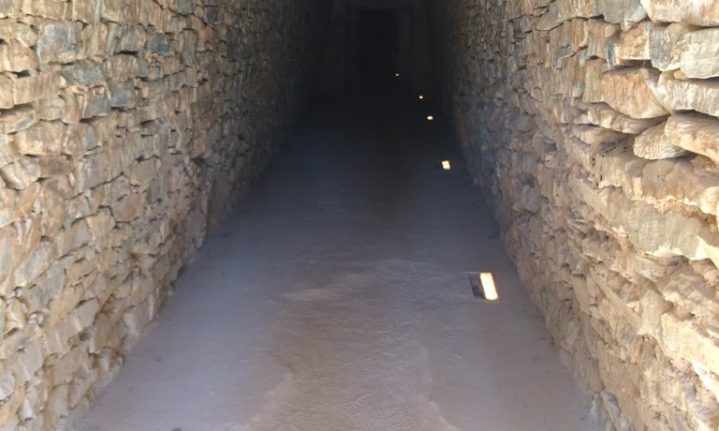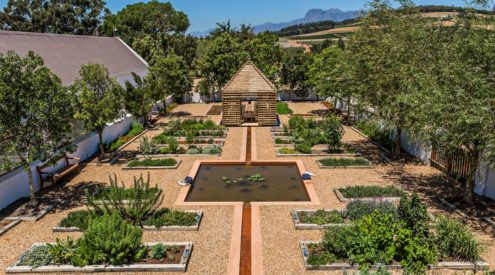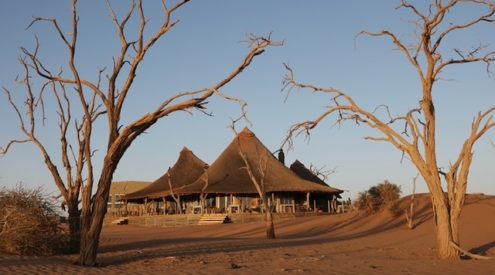Bloomberg proposes travellers explore their list of the new Seven Wonders of the World. These are archaeological and natural treasures ‘spanning far wider than the ancient Greek world and catering to all types of modern explorers,’ the publication claims.
In a new series, we’ll be taking a look at each one of these incredible attractions.
Antequera Dolmens is located at the heart of Andalusia in southern Spain and comprises three megalithic monuments: Menga, the Viera Dolmens, and Tholos of El Romeral. (A megalith is a pre-historic stone that has been used to construct a structure or monument). Here is all you need to know about it.
It may seem as if these chambers are part of the natural landscape but the truth is, they are human-made. The Menga and Viera are believed to have been built by farmers who lived in the Guadalhorce valley between 3500BC and 3000BC during the Neolithic Period and Copper Age from 5000BC and 2200BC. The El Romeral was then built later, around 2500BC.
The size, weight, and volume of the stone blocks assembled to make these chambers, make them some of the most important engineering and architectural works of European Prehistory.
Large stone blocks form chambers and spaces that are covered by roofs. Each of the dolmens is a single chamber tomb with two or more vertical megaliths supporting an enormous vertical stone which is then covered with mounds of earth.
Entry into the sites is free with ample parking and security.
On the same property are the two mountainous formations – La Peña de los Enamorados and El Torcal de Antequera. During the construction of the three dolmens, these two natural monuments played a significant role in their positioning.
In 2016, the Antequera Dolmens were inscribed as a UNESCO World Heritage Site.
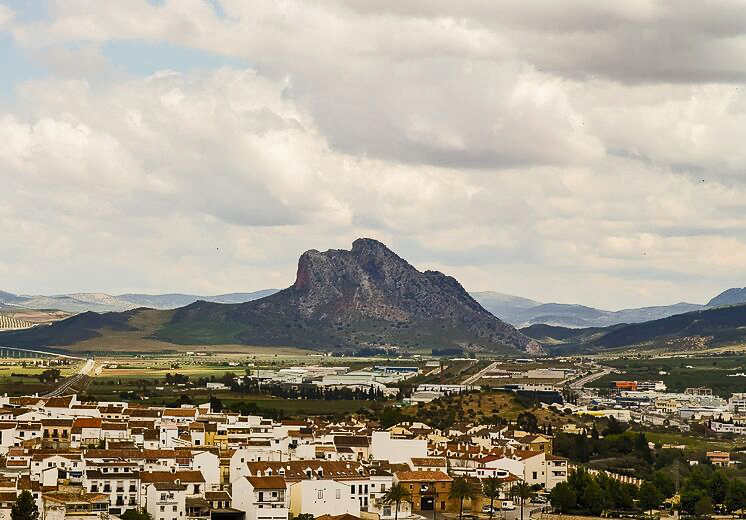
La Peña de los Enamorados, one of the mountains near the city of Antequera, played a significant role in the positioning of the dolmens.
The Menga Dolmen
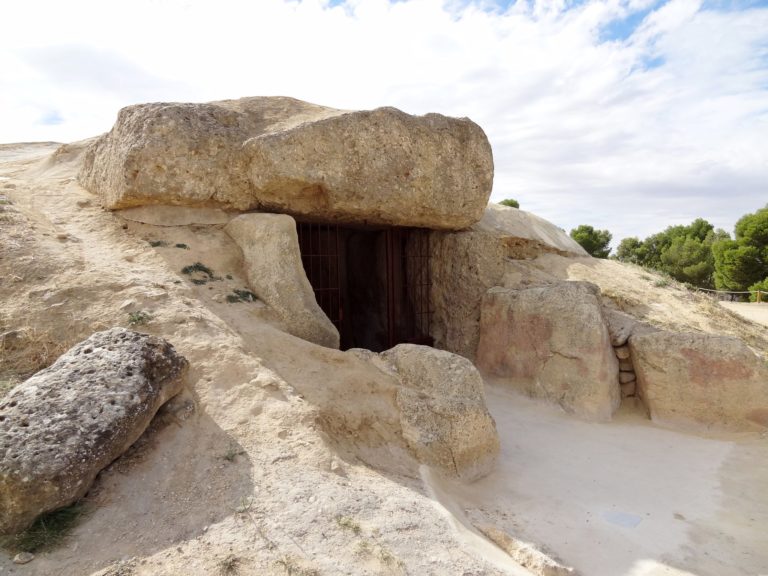
Dolmen de Menga in Antequera
The Dolmen of Menga is one of the largest and known ancient megalithic in Europe. The burial tumulus is 27.5 metres long, 6 metres wide, and 3.5 metres high. The design of the Menga is known as the megalithic corridor tomb and La Peña de los Enamorados is clearly visible from this dolmen.
Each side of the Menga is built of 12 upright stones and one stone closing the end.
During the site’s excavation in the 19th century, archaeologists found skeletons which came to prove that the site was indeed a burial site.
The Viera Dolmen
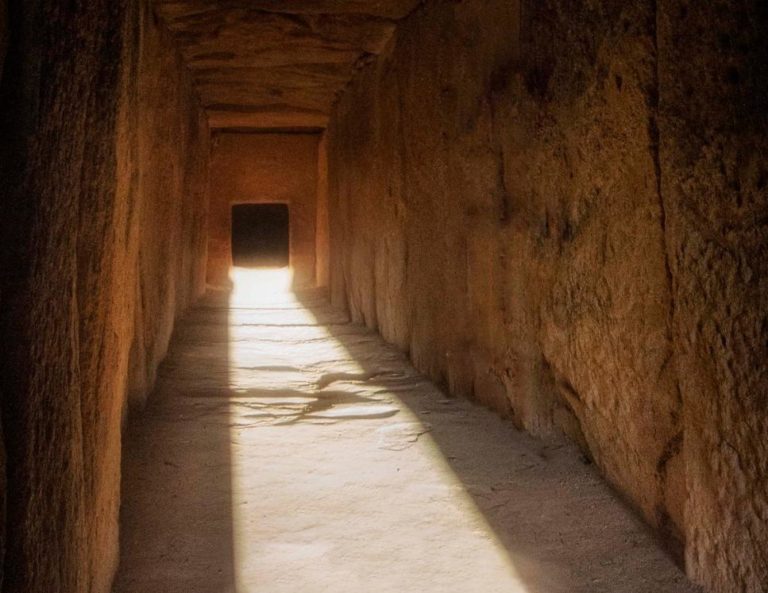
Dolmen de Viera in Antequera
Dolmen de Viera was built during the Copper Age approximately 3510 – 3020 BCE and has had the status of a National Monument since 1923. During this site’s excavation, only tools and ceramics were uncovered although it is still presumed to have been a burial chamber.
The dolmen consists of two sections, the first being the open corridor into the chamber, then the second is the 21metres long passage.
Originally, the chamber was made of 16 upright stones on each side but over the years three of the 16 stones have gone missing.
Tholos of El Romeral Dolmen
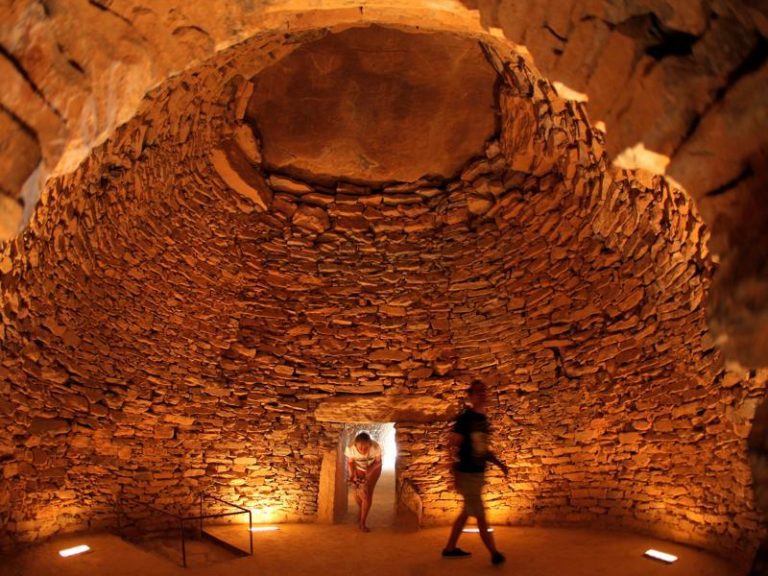
Tholos of El Romeral Dolmen
Although this chamber attracts fewer visitors, people who have visited all three say this is the most beautiful. The masonry walls definitely have something to do with the beauty of this chamber. The Tholos of El Romeral Dolmen is the false cupola tomb and is the deepest chamber of the three. This chamber consists of two sections; the first being the long corridor, and then the burial chamber. The chamber consists of two sections: the corridor and the small burial chamber.
Stay tuned for the next part in our series on Bloomberg’s new Seven World Wonders no 2: Baalbek, Lebanon.
Source: UNESCO
PICTURES: Twitter
ALSO READ:
Cape Town’s kelp forest makes Bloomberg’s new Seven World Wonders








